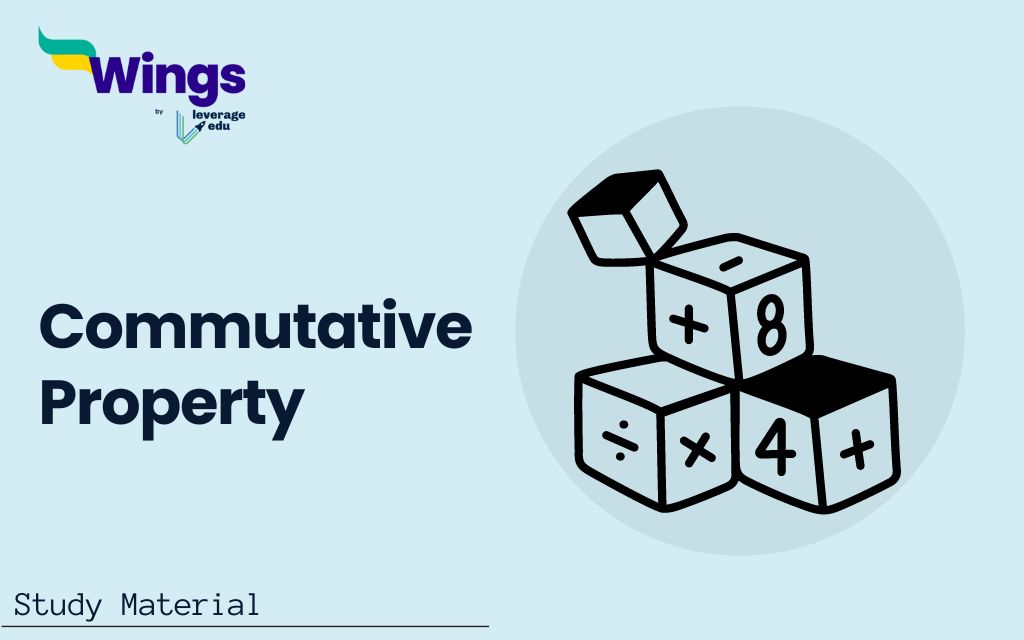The commutative property is a fundamental concept in mathematics, often introduced early in our education. It asserts that the order in which two numbers are added or multiplied does not affect the result. This property applies to addition and multiplication but not to subtraction or division. Understanding the commutative property is important as it simplifies complex calculations and enhances problem-solving skills. In this blog, we will explore the commutative property in detail, supported by solved examples to illustrate its application in various mathematical problems.
Contents
What is Commutative Property?
The commutative property is a basic principle of arithmetic and algebra that states the order in which two numbers are added or multiplied does not change the result. This property applies to addition and multiplication but not to subtraction or division.
Commutative Property of Addition
For any two numbers a and b.
| a+b = b+a |
Example:
3+5 = 5+3
Both expressions equal 8.
Commutative Property of Multiplication
For any two numbers a and b:
axb = bxa
Example:
4×7 = 7×4
Both expressions equal 28.
Also Read: Rational And Irrational Numbers: Differences, Examples
Properties of Commutative Property
The commutative property is a fundamental property in mathematics that applies to addition and multiplication. It states that the order in which you add or multiply numbers does not affect the final result. In simpler terms, you can swap the numbers around without changing the answer.
For Addition
- Symbolically, the commutative property of addition is expressed as a + b = b + a, where a and b are any real numbers.
- For example, 3 + 5 = 8 and 5 + 3 = 8. Both expressions result in the same sum.
| a + b = b + a |
For Multiplication
- Symbolically, the commutative property of multiplication is expressed as a x b = b x a, where a and b are any real numbers.
- For example, 2 x 4 = 8 and 4 x 2 = 8. Both expressions result in the same product.
| a x b = b x a |
Here are some key points to remember about the commutative property:
- It only applies to addition and multiplication.
- It does not apply to subtraction (a – b ≠ b – a) or division (a ÷ b ≠ b ÷ a). For instance, 5 – 3 ≠ 3 – 5 and 10 ÷ 2 ≠ 2 ÷ 10.
- The commutative property is an essential concept in simplifying expressions and solving equations.
- It allows us to rearrange terms without affecting the outcome, making calculations more efficient.
Also Read: Questions of Logical Problems Reasoning
Properties of Commutative Property Solved Examples
The commutative property states that the order in which two numbers are added or multiplied does not change the result. Let’s illustrate this with some solved examples.
Example 1: 4+9=9+4
Solution:
4+9=13
4 + 9 = 13
Since both expressions equal 13, this confirms the commutative property of addition.
Example 2: 15+23=23+15
Solution:
15+23=38
15 + 23 = 38
Both expressions equal 38, demonstrating the commutative property of addition.
Commutative Property of Multiplication
Example 3: 6×8=8×6
Solution:
6×8=48
8×6=48
Both expressions equal 48, confirming the commutative property of multiplication.
Example 4: 12×5=5×12
Solution:
12×5=60
5×12=60
Both expressions equal 60, showing the commutative property of multiplication.
Non-Applicability to Subtraction and Division
Example 5: 10−3≠3−10
Solution:
10−3=7
3−10=−7
Since 7 does not equal -7, the commutative property does not apply to subtraction.
Example 6: 16÷4≠4÷16
Solution:
16÷4=4
4÷16=0.25
Since 4 does not equal 0.25, the commutative property does not apply to division.
FAQs
Addition and multiplication are both commutative property, which means they work with each other. When you add or multiply two numbers, moving them around or changing their order doesn’t change the answer. For example, 5 + 6 gives 11, and 6 + 5 also gives 11.
We use induction on the natural number b to show that a + b = b + a, which is a commutative property.
It is said that commutative property says that when we add or multiply two numbers, the result is always the same, even if we change the numbers around.
This was all about “Comutative Property”. For more such informative blogs, check out our Study Material Section, or you can learn more about us by visiting our Indian exams page.
 One app for all your study abroad needs
One app for all your study abroad needs














